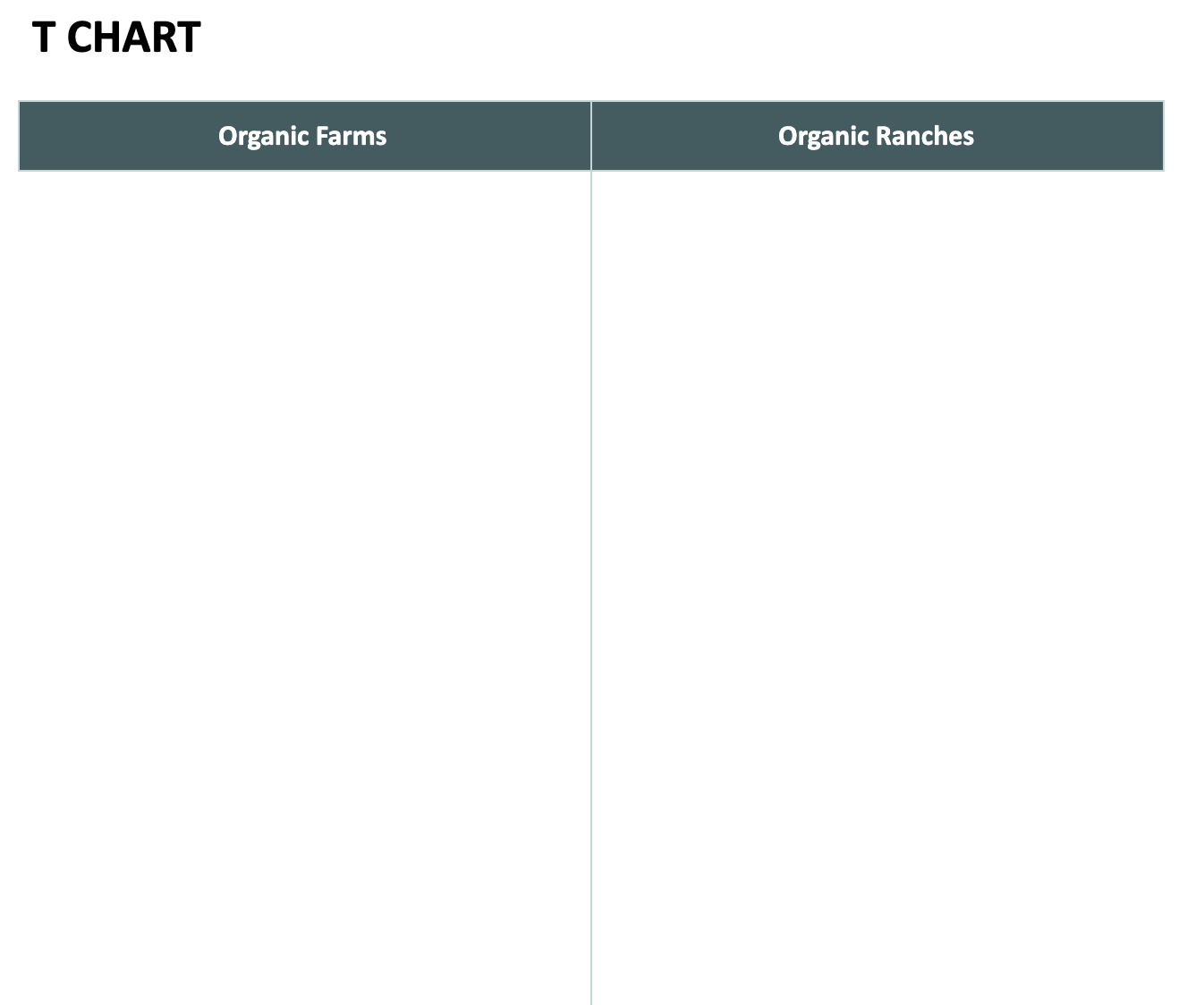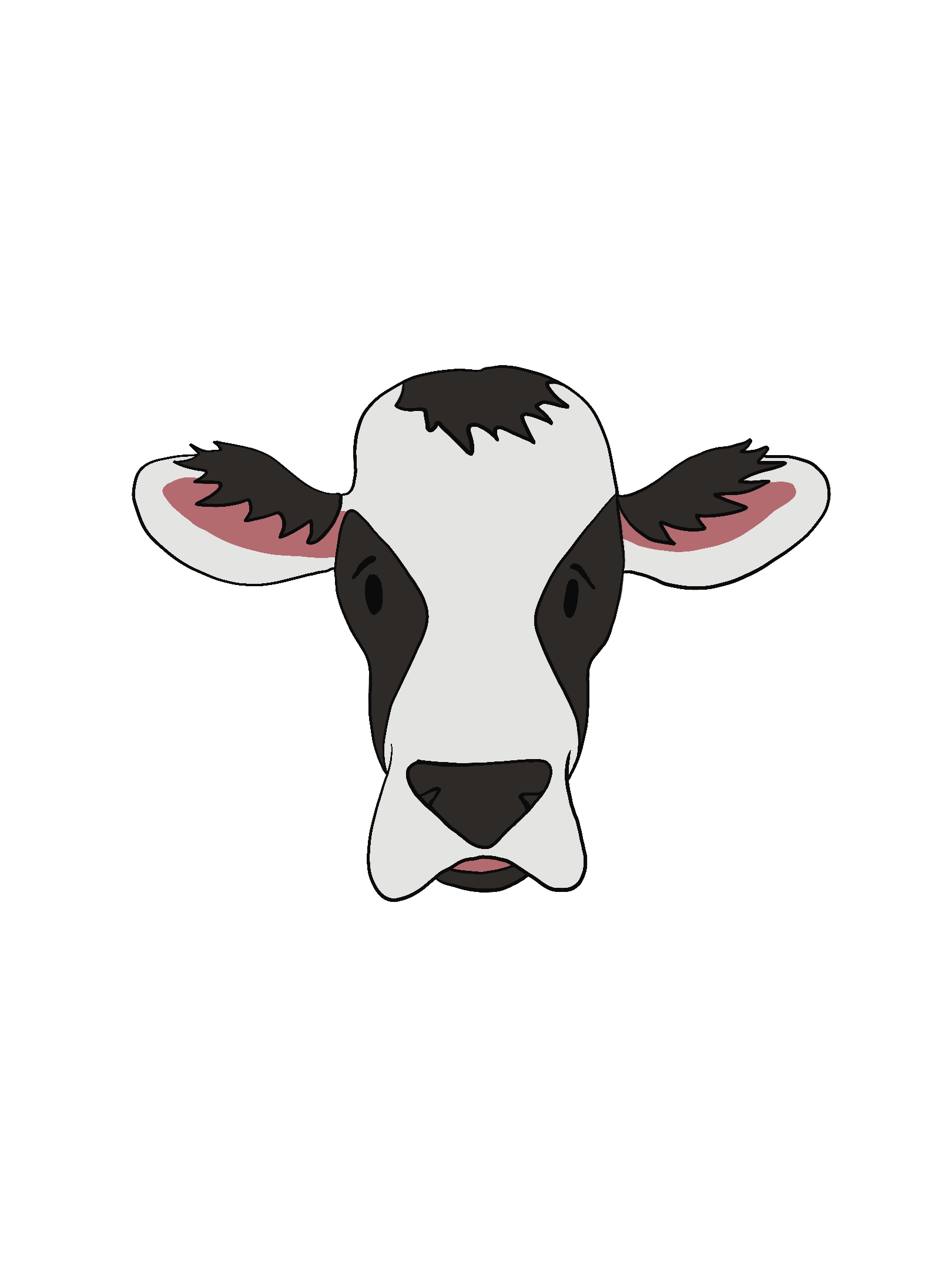Summary
Do you ever wonder how the food we eat gets to our tables? You might think about farmers, factories, truck drivers, or grocery stores, but there is another important worker who makes sure our food is safe and ready to eat. This worker is called a food inspector. When it comes to meat, poultry, and eggs, it is a USDA food inspector that makes sure the food that comes to us is safe and that the animals on farms are being treated as they should be. How does someone become a USDA inspector? What kinds of work do they do? These activities will help you understand the skills needed for a career as a USDA inspector and see if this work might be a great fit for you!
Overview
Do you like being outdoors, working with food, seeing things grow, working with animals, and doing work that is very important for others? Then a career in the Agriculture, Food, and Natural Resources career cluster may be just right for you! Workers in the Agriculture, Food, and Natural Resources career cluster provide people with products they need and use every day. One of the many careers that falls into this cluster is USDA inspector.

A person who checks food for health and safety is called an inspector. The United States Department of Agriculture (USDA) is a government agency that focuses on farms and ranches. USDA inspectors visit food processing plants and check animals for health and safety before and after they become food. They also work with farms and companies to make sure fruits, vegetables, and other foods are safe for people to eat.
USDA food inspectors work in a group called the Food Service and Inspection Service (FSIS). These inspectors are important in making sure the foods we find in our homes are safe to eat. USDA inspectors have job security because there is always a need for keeping food safe. The average salary for a USDA inspector is $45,000 per year.
To be a USDA inspector, you need to either have a bachelor's degree or at least one year of experience in food safety. You must also pass a special test to be hired. A college degree in food science would be a good choice to prepare for this career. A background in Future Farmers of America (FFA) can also help you to understand the process food goes through from farm to table. However, you don’t have to have farm experience to be successful in the USDA.
USDA inspectors need a wide range of skills in order to be successful in their jobs, including:
Like to Travel. While there are USDA inspectors who work in factories that process meat, USDA inspectors can also travel between farms and ranches. To do this work, it helps to like variety and traveling as part of your day.
Detail-oriented. It is important for USDA inspectors to catch even the smallest of problems to make sure animals and food stay safe. Inspectors have to be able to notice when there are problems and know what to do about them.
Conscientious. When it comes to food, not following the rules could lead to people getting sick. USDA inspectors have to stand up for what is right to protect people.
Good Communicators. USDA inspectors have to be able to explain what rules are being broken and how to fix them. Inspectors do not work to get people into trouble—they must make sure food is safe for all people.
Dependable. People count on USDA inspectors to keep their food safe. USDA inspectors need to have good work attendance and be focused on their work so that others know they can count on them.
Explore the following activities to understand what USDA inspectors do and how they make a difference on your plate every day.
Materials List
Device with i
nternet access
Pencil or pen
Putting You in USDA Student Guide (attached)
I Notice, I Wonder activity (page 8)
Farms and Ranches T chart (page 10)
What? So What? Now What? chart (page 12)
What to Do
Note that you can use the attached Putting You in USDA Student Guide for the activities on this page. The Student Guide can be viewed on your computer or printed out.
Learn about what the USDA inspects with the I’ll Be Watching You Food Sort activity. Then, be a food detective in your own home. Look for clues and see if you can find out what the symbols on your food stand for. Can you find evidence of food inspection in your refrigerator or pantry?
Do you have what it takes to be an organic farmer or rancher? Find out with the Choose Your Own Organic Adventure activity. You will make the choices that decide if your farm or ranch can be certified organic.
In the Look Out activity, explore and compare careers in food safety. Think about what inspectors do, why they do it, and what questions you have using the What? So What? Now What? activity.
Learn about getting a food handler’s license, a great first step in both food safety and getting a job working with food.
Ready for a bonus challenge? Inspectors have to be detail-oriented and spot the smallest differences in foods quickly. Test how detail-oriented you are by spotting the differences in a timed game. Can you improve your time and be ready to become a super inspector?

Activity 1: I'll Be Watching You Food Sort
The Food and Drug Administration (FDA) and the United States Department of Agriculture (USDA) both inspect foods for safety. But who takes care of which foods and how do we know? How can they keep it all straight? In this activity, find out how these two groups are different and which groups are in charge of which foods.
Materials
Computer or Tablet
Internet Access
Instructions
Take a look at the following infographic comparing the USDA and FDA: USDA Versus FDA: Comparing the 2 Types of Food Inspection
Once you have studied the infographic about these two groups and the foods they inspect, click the following link to make a copy of the Food Sort activity: USDA FDA Food Sort. Match the foods to the inspectors that check on them. Can you sort them without looking back at the infographic?
Use the infographic to check your work. How did you do? (Answers can be found on the bottom of page 18 in the attached Student Guide.)
Which inspection agency do you think inspects more foods?

Activity 2: Choose Your Own Organic Adventure
In this activity, you become the farmer or rancher. Your challenge: can you get your food certified USDA organic? Make the wrong choice for your farm or cattle, and you won’t get certified.
Materials
Computer or tablet
Internet connection
Farms and Ranches T-chart (pictured below and on page 10 of the attached Student Guide)
Pencil or pen
Instructions
Click the following link to start your adventure as a certified organic farmer or rancher: Certified Organic: A Choose Your Own Adventure Tale
Record what you learned in the T-chart to compare organic farmers and organic ranchers. You can use the chart on page 9 of the attached Student Guide or make your own. How are organic farms and ranches similar? What sorts of things do you think inspectors look for?
Challenge

Activity 3: Look Out
There are lots of different types of work for food inspectors. In this activity, you can explore videos showing some of that different work. Then, use the What? So What? Now What? chart to record your thinking.
Materials
Computer or Tablet
Internet Access
What? So What? Now What? Chart (pictured below and on page 12 of the attached Student Guide)
Pencil or Pen
Instructions
Choose at least two videos from the choices below.
Using the What? So What? Now What? chart, think about what you have learned from the videos. You can use the chart on page 11 of the attached Student Guide or make your own. Record things like what the inspectors were doing under the word “What?”.
Now think about why the inspectors do what they do. Who benefits from their work? Write what you have learned under the words “So What?”.
Under “Now What?”, record any questions you still have. Do you think there are other videos on the choice board that might answer your questions? You can go back to other videos and keep adding to your lists.

Extend
A great way to start understanding food safety is to get a food handler’s license. Visit your local state health department location or OKFoodHandlers.com to take a course and get licensed. A license not only helps you understand food safety, but also is required for many jobs that work with food. Having a food handler’s license is a great first step to getting a job at a restaurant.
Want to Learn More?
The USDA has several scholarship programs. Check out the USDA Scholarship Programs to see if they offer a scholarship that would be right for you. You can also take a look at My Next Move to discover more about agriculture inspectors, what they do, and the knowledge, skills, and abilities needed in the field.
There are other careers related to being a USDA Inspector that you can find at My Next Move. USDA inspectors aren’t the only career to explore in the Agriculture, Food, and Natural Resources cluster. Check out the other careers classified as Farming, Forestry, Fishing, and Hunting to see even more options that let you travel, get outdoors, and help to protect people and animals.

Sources
aleksandarlittlewolf. (2020). An unrecognizable cattle veterinarian touching baby sheep lamb Free Photo. https://www.freepik.com/free-photo/unrecognizable-cattle-veterinarian-touching-baby-sheep-lamb_11036752.htm#page=1&query=agriculture&position=7
CareerOneStop. (2019, August 5). Agriculture Inspector Career Video [video]. Youtube. https://www.youtube.com/watch?v=mcDnbqsVA2o
Chernaya, Ksenia. (2020). White eggs on brown tray. Pexels. https://www.pexels.com/photo/white-eggs-on-brown-tray-3980617/
Eater. (2017, March 24). USDA vs. FDA: What’s the Difference?. Eater.com. https://www.eater.com/2017/3/24/15041686/fda-usda-difference-regulation
eFoodHandlers. (2020). Oklahoma Food Handlers Card. eFoodHandlers inc. https://www.okfoodhandlers.com/#:~:text=To%20get%20a%20Oklahoma%20Food,examination%20from%20an%20accredited%20organization
Klimkin. (2017). Cock Farm Village. Pixabay. https://pixabay.com/photos/cock-farm-village-chicken-polygamy-2522623/
K20 Center. (n.d.). I Notice, I Wonder. Strategies. https://learn.k20center.ou.edu/strategy/180
K20 Center. (n.d.). T-chart. Strategies. https://learn.k20center.ou.edu/strategy/86
K20 Center. (n.d.). What? So What? Now What?. Strategies. https://learn.k20center.ou.edu/strategy/95
Meatnewsnetwork. (2008, November 12). Meat inspection. Youtube. https://www.youtube.com/watch?v=mEKwJ6DkwRo
My Next Move. (n.d.) Agricultural Inspectors. https://www.mynextmove.org/profile/summary/45-2011.00
My Next Move. (n.d.) Farming, Forestry, Fishing and Hunting. https://www.mynextmove.org/find/browse?c=11
My Next Move. (n.d.) Search for agricultural inspectors. https://www.mynextmove.org/find/search?s=agriculture+inspector
NDSUExtension. (2015, July 21). Exploring Food Safety Careers [video]. Youtube. https://www.youtube.com/watch?v=rDVQK-hTDz0
OhioPoultryAssn. (2012, June 18). Egg safety on Ohio farms: USDA quality assurance and on-site inspections [video]. https://www.youtube.com/watch?v=pAPgzQz9NrU
Registrar Corp. (2020). FDA and USDA: Who Regulates What?. https://www.registrarcorp.com/resources/fda-usda-food-regulations/
Smithsonian.com. (2018). Spot the difference daily. Smithsonian Magazine. https://www.smithsonianmag.com/games/spot-difference-180968040/
Study.com. (2020). Begin a career as a food inspector: Requirements, duties, outlook. https://study.com/articles/Begin_a_Career_as_a_Food_Inspector_Requirements_Duties_and_Outlook.html#:~:text=Requirements%20for%20a%20Food%20Inspector&text=Food%20inspectors%20for%20the%20U.S.,for%20the%20USDA%20inspector%20positions.
United States Department of Agriculture (USDA).(2019). Complete a food inspector application. FSIS. https://www.fsis.usda.gov/wps/portal/fsis/topics/careers/apply-for-a-job/complete-a-food-inspector-application
USDA. (2020). USDA Scholarship Programs. U.S. Department of Agriculture. https://www.usda.gov/our-agency/careers/scholarship-programs
USDA AMS. (2014, December 14). Introducing the USDA specialty crops investigation division [video]. Youtube. https://www.youtube.com/watch?v=neXlCsKxxAo
WILL Interactive, Inc. (n.d.). The road to organic certification. USDA. https://access.willinteractive.com/the-road/the-road-to-organic-certification


